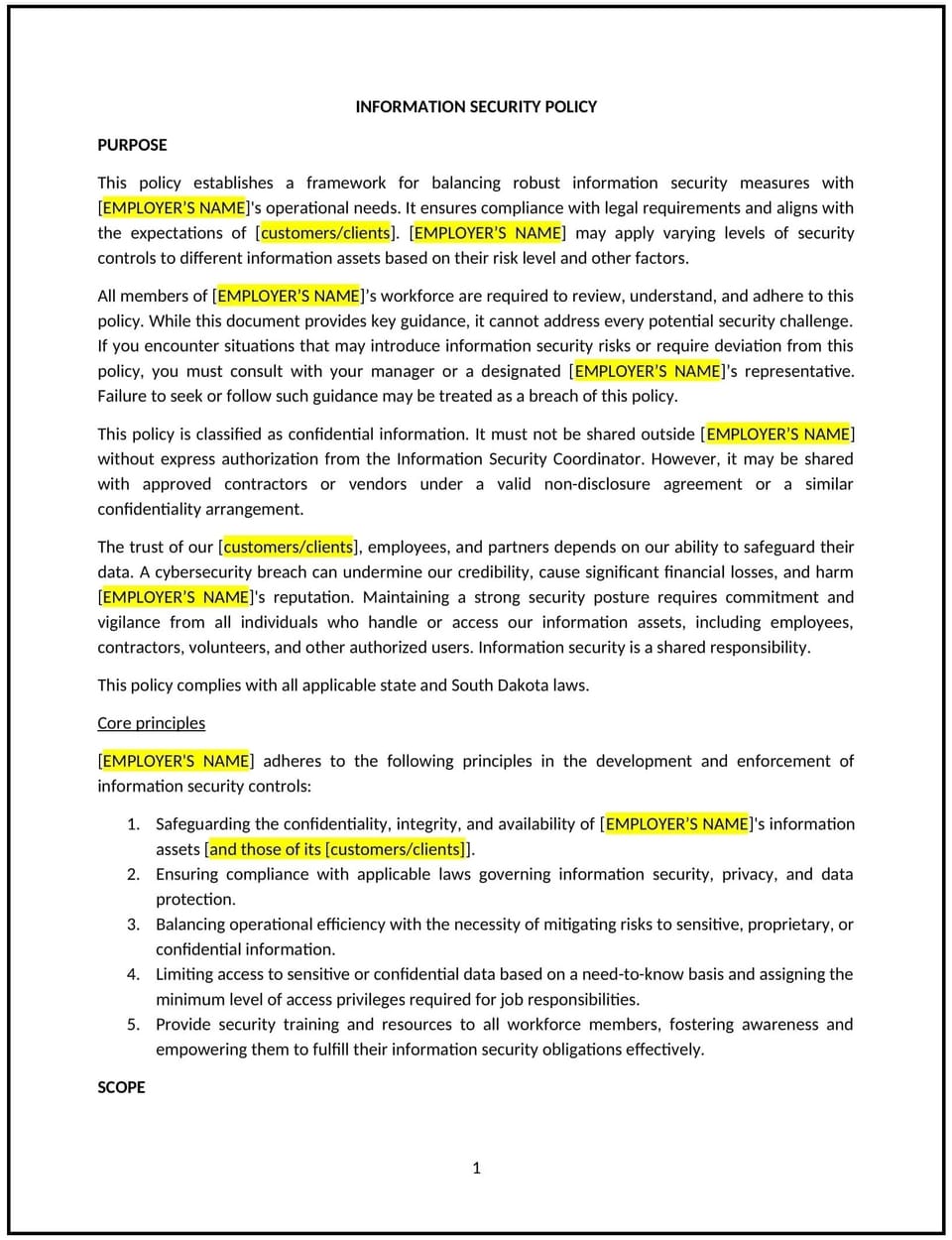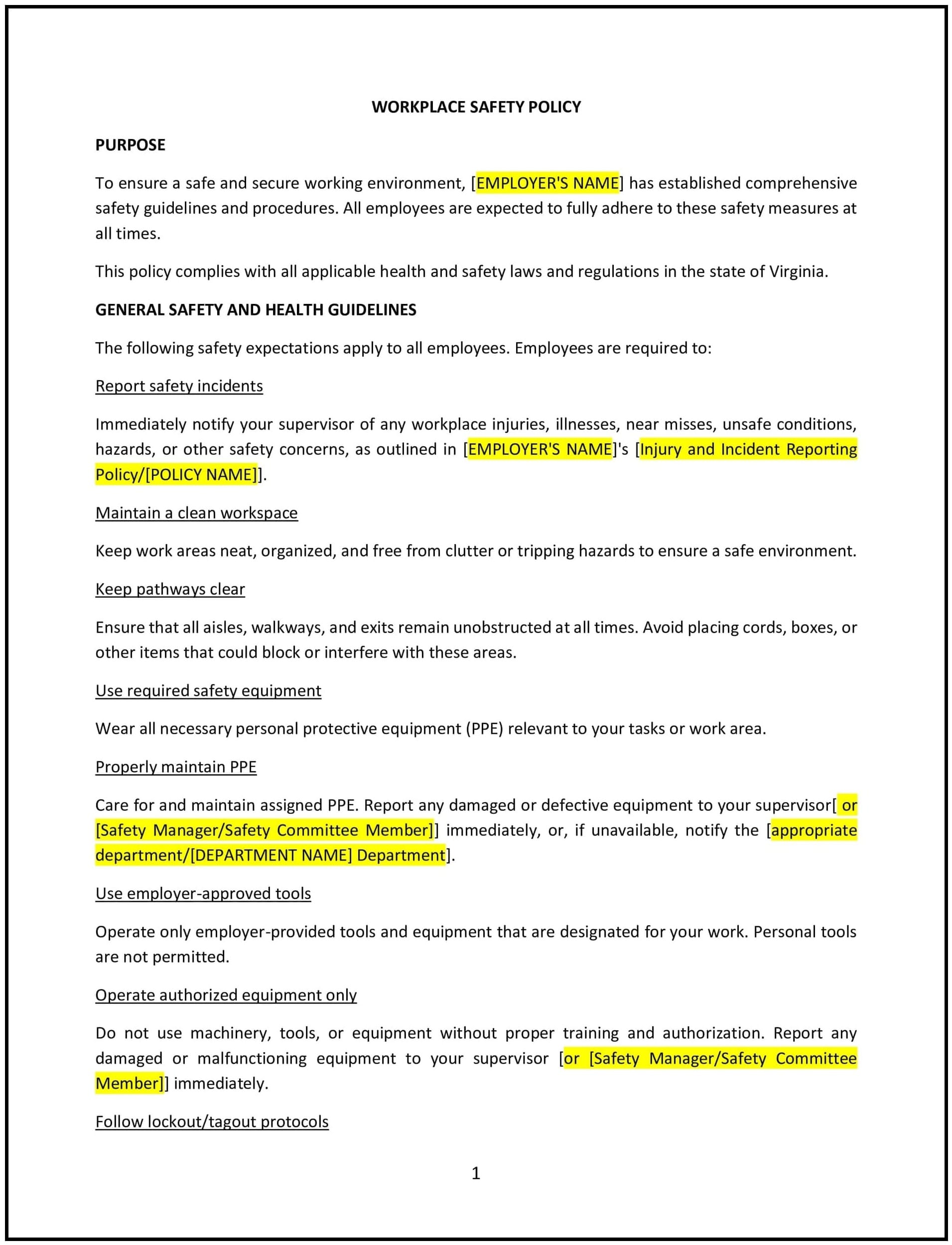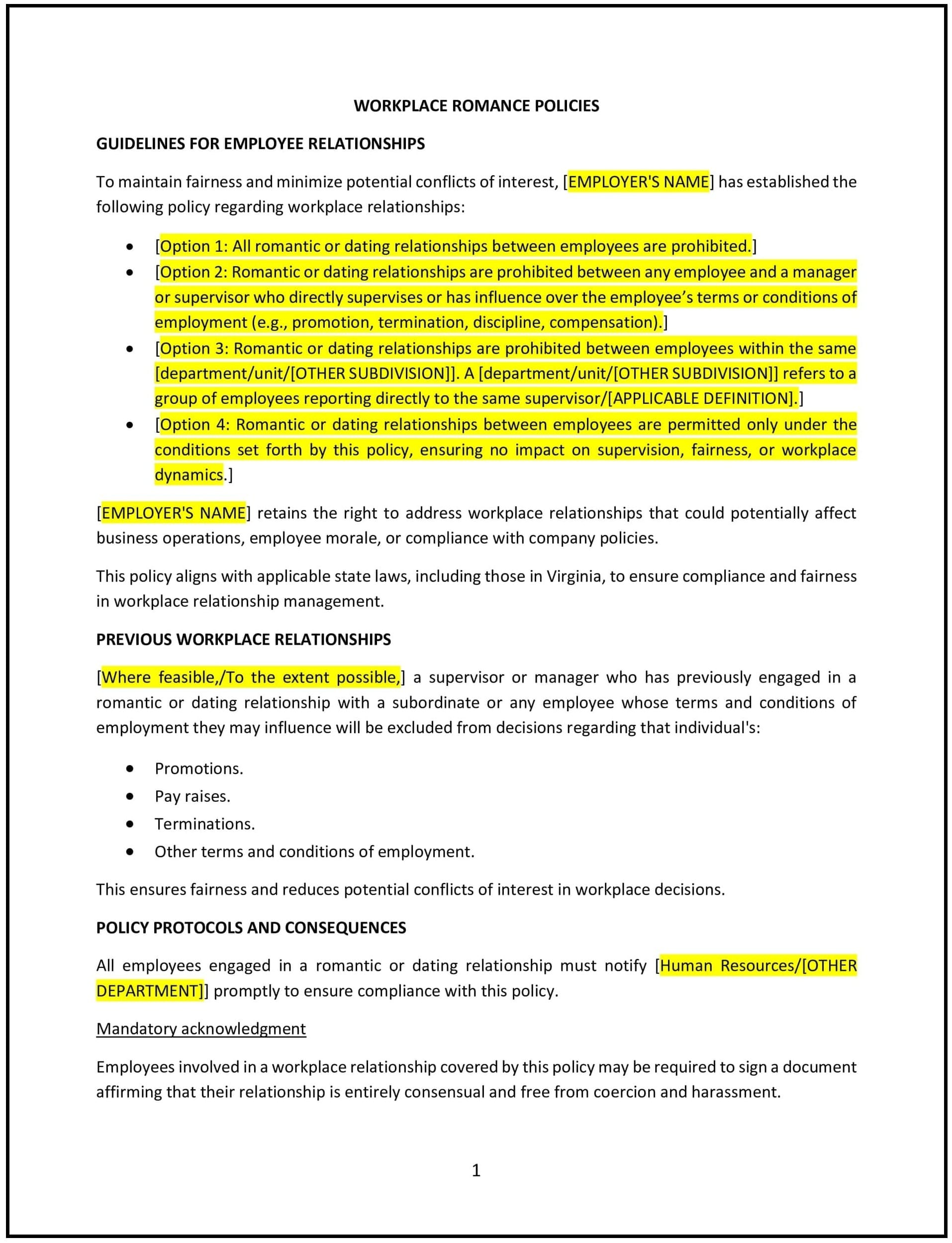Information security policy (South Dakota): Free template

Information security policy (South Dakota)
This information security policy is designed to help South Dakota businesses protect sensitive data and IT systems from unauthorized access, breaches, and cyber threats. It outlines procedures for data protection, access control, and incident response.
By adopting this policy, businesses can safeguard sensitive information, reduce cybersecurity risks, and align with general best practices for data security.
How to use this information security policy (South Dakota)
- Define information security: Explain what constitutes sensitive data, such as customer information, financial records, and intellectual property.
- Establish access controls: Specify procedures for granting and revoking access to sensitive data and systems.
- Implement data protection measures: Provide examples of security measures, such as encryption, firewalls, and regular backups.
- Outline incident response procedures: Specify steps for responding to data breaches or cyberattacks, including reporting and recovery.
- Train employees: Educate staff on information security best practices and their responsibilities.
- Monitor compliance: Regularly review security practices to ensure adherence to the policy.
- Review and update: Assess the policy annually to ensure it aligns with evolving cybersecurity threats and business needs.
Benefits of using this information security policy (South Dakota)
This policy offers several advantages for South Dakota businesses:
- Protects sensitive data: Demonstrates a commitment to safeguarding customer, employee, and business information.
- Reduces cybersecurity risks: Helps prevent data breaches, ransomware attacks, and other cyber threats.
- Enhances compliance: Ensures adherence to data protection laws and industry standards.
- Builds trust: Strengthens relationships with customers and stakeholders by prioritizing data security.
- Supports business continuity: Minimizes disruptions caused by cyber incidents.
Tips for using this information security policy (South Dakota)
- Communicate the policy: Share the policy with employees and include it in training materials.
- Provide training: Educate staff on information security best practices and their responsibilities.
- Monitor compliance: Regularly review security practices to ensure adherence to the policy.
- Address issues promptly: Take corrective action if security vulnerabilities or breaches are identified.
- Update regularly: Assess the policy annually to ensure it aligns with evolving cybersecurity threats.
Q: How does this policy benefit businesses?
A: By protecting sensitive data, businesses can reduce cybersecurity risks, enhance compliance, and build trust with customers.
Q: What are examples of data protection measures?
A: Examples include encryption, firewalls, multi-factor authentication, and regular software updates.
Q: How should businesses handle data breaches?
A: Businesses should follow incident response procedures, including containment, investigation, and notification of affected parties.
Q: Can employees use personal devices for work?
A: Personal devices should only be used if they comply with the business’s security policies and are approved by IT.
Q: How often should businesses review this policy?
A: Businesses should review the policy annually or as needed to ensure it aligns with evolving cybersecurity threats.
This article contains general legal information and does not contain legal advice. Cobrief is not a law firm or a substitute for an attorney or law firm. The law is complex and changes often. For legal advice, please ask a lawyer.


